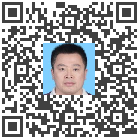 biography
biography
yonggui liu, associate professor, philosophic doctor (post-doctoral), postgraduate tutor, member of automation society, ieee member, national natural science foundation project evaluation expert, guangdong province technology project evaluation expert, shenzhen science and technology project evaluation expert
personal achievements and experiences
he is mainly engaged in the theoretical research and technical development of wireless sensor networks, networked control systems and autonomous vehicle cooperative control. in recent years, more than 40 papers have been published in important domestic and foreign journals and conferences, among which 15 were retrieved by sci and more than 20 by ei. the main papers were published in the internationally renowned journal, such as ieee transactions on intelligent transportation systems, ieee transactions on vehicular technology, ieee access, iet control theory & applications, ad hoc & sensor wireless networks, international journal of distributed sensor networks, sensors. seven invention patents have been applied, three of which have been authorized. three software patents have been applied, and all of them have been authorized. served as chairman of the 2012 china control conference collaborative estimation and coordination control topics, as well as the review work of several international and domestic magazines and conferences.
he has hosted a number of fund projects in the national natural science foundation of china (nsfc), guangdong natural science foundation, guangdong industry-university-research cooperation project, guangzhou science and technology plan project and dongguan science and technology plan project. participated in nsfc key projects, nsfc-overseas scholar cooperation projects and overseas returnees and other national and provincial projects.
the research direction
(1)wireless sensor networks and application;
(2)embedded system development;
(3)networked control systems;
(4)coordinated control of unmanned intelligent vehicles;
(5) service robot and cooperative control.
detailed research orientation
and applications of wireless sensor networks (wsns) :
study the wsns protocol, target tracking and positioning technology, and develop wsns applications in wisdom cities, wisdom tunnels, intelligent transportation systems and other fields. implement to monitor subway, bridges, tunnels, slope high-speed rail, highways and other large infrastructure management structure, provides high accuracy of wireless sensor network monitoring theory and technology; provide solutions and information management systems for all kinds of big data research data analysis based on cloud computing, storage, processing, distribution and synchronization service.
embedded system development:
study the whole hardware systems and software system. hardware part: embedded sensor node design and manufacture, intelligent wireless gateway design and manufacture, embedded handset hardware development.
software part: with large bridge as an example, for the urban bridge management software one can detailedly record and manage the basic information of the bridge, archives, can be the bridge daily checking and regular inspection, maintenance and custody of the key work record, management and analysis, and provide needed data records for bridge custody, mission planning, assessment analysis, statistics and other functions.the specific software includes the development of the underlying driver of the sensor node, the design of embedded system clipping and application program, the development of network protocol, the development of intelligent gateway system software, the development of the application software on the pc and mobile app, and the development of large-scale distributed database technology, and embedded handset hardware development.
networked monitoring and control:
research on the theory and technology of wireless network-based collaborative control system is carried out, and applied to intelligent control of mobile vehicle networking and unmanned vehicle, and multi-robot cooperative control. the technologies involved include: distributed information processing, high-precision 3d map construction, gps based positioning, unmanned vehicle (robot) positioning, path planning, path following and control, automatic obstacle avoidance, road recognition and traffic lights, traffic signs, and pedestrian recognition theories and technologies.these theories and technologies can be specifically applied to the delivery of goods by unmanned vehicles, the collaborative distribution of goods by unmanned cleaning vehicles on the road, multi-robot warehouses and the unmanned water racing vehicles on the road, which have huge market demand and practical significance.
service robots:
develop natural language recognition and intelligent interactive technology, face recognition and human-computer interaction, intelligent voice dialogue chip development and application of service robot obstacle avoidance and navigation technology, service robot design and control technology, the bottom indoor map construction technology, measurement distance technology based on ultrasonic, infrared, laser sensor range, and information fusion technology, robot remote communication and control technology and so on.
we welcome students from the fields of automation, computer and information processing and network to join our research team. we particularly welcome winners of smart car races, freescale competitions, electronic design competitions, and mathematical modeling competitions. relevant enterprises are also welcome to communicate and cooperate on relevant scientific research projects.

visit my homepage



